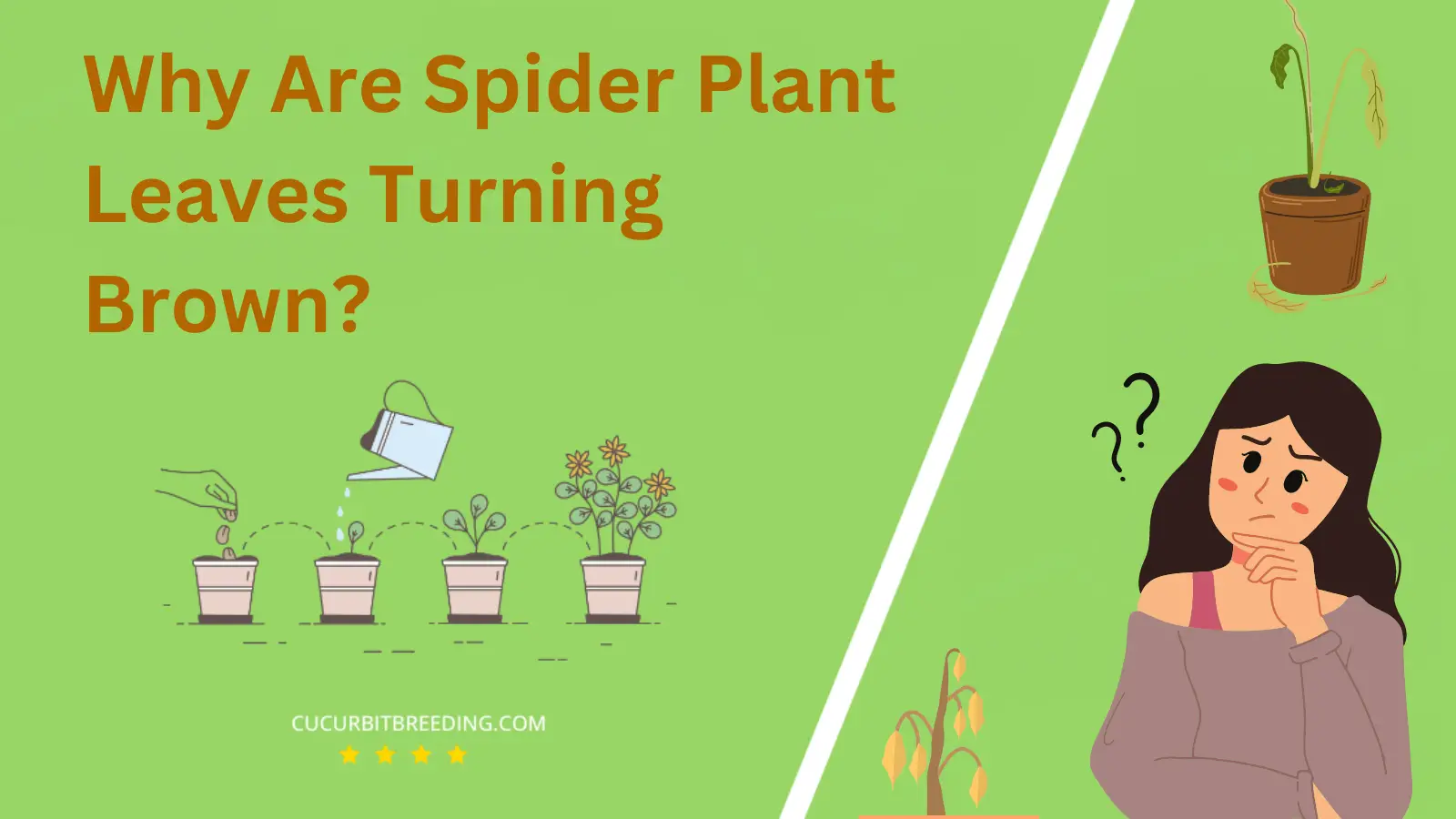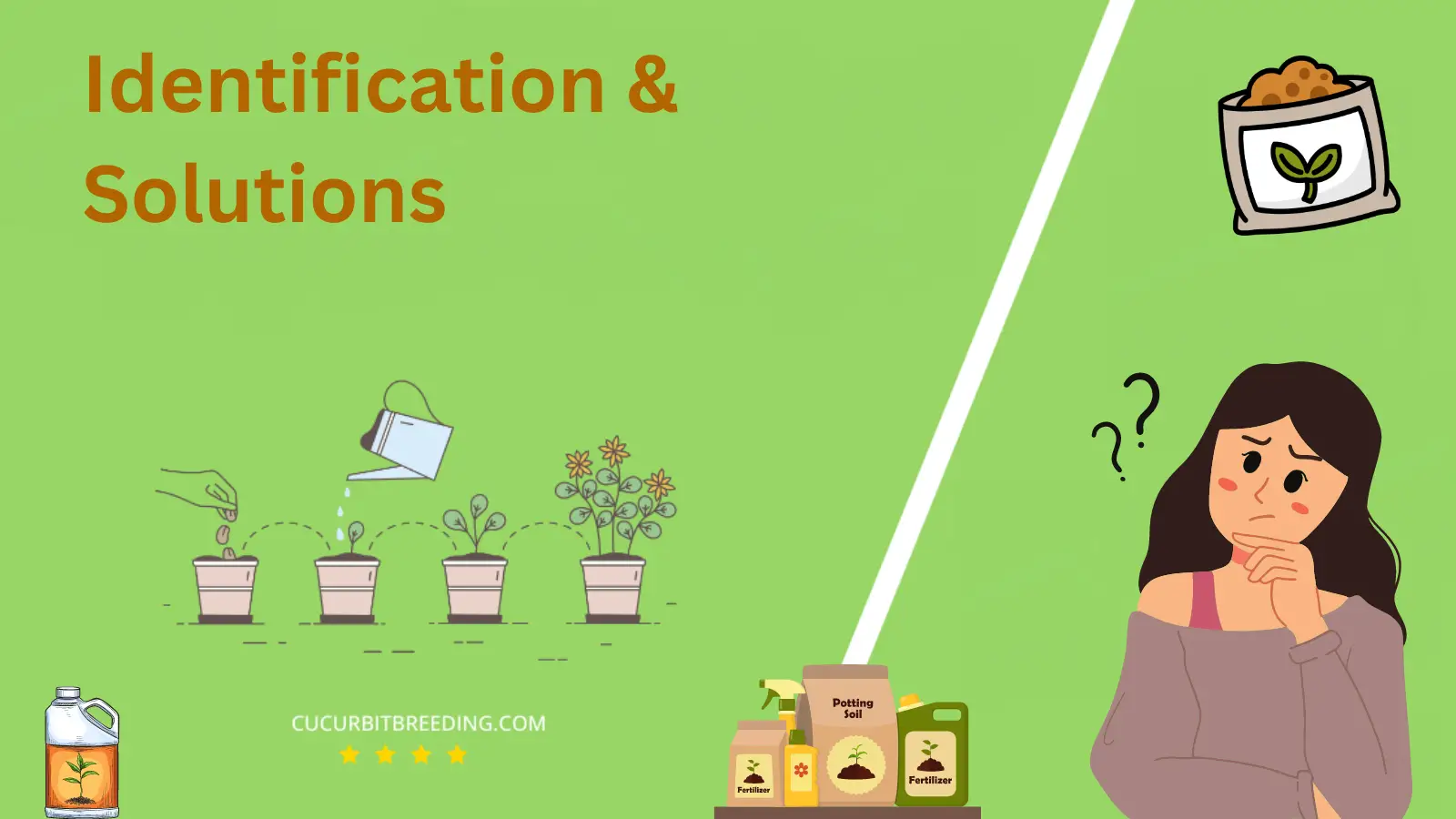
Got a case of browning spider plant leaves? This surprisingly common phenomenon can leave even the greenest thumbs scratching their heads in puzzlement. Spider plants, with their lush, vibrant foliage, are a beloved staple in many indoor gardens; so when these typically hardy plants show signs of distress, it can be quite concerning.
In this piece, we’ll delve into some of the many potential culprits that could be causing your spider plant leaves to turn brown. The answers may surprise you as they are varied and myriad.
Why Are Spider Plant Leaves Turning Brown?
There could be several reasons why the leaves of your Spider plant are turning brown. Overwatering is one likely culprit — it can cause root rot, leading to browning leaves. Another possible cause is excessive fluoride or chlorine in the water. Additionally, low humidity or a hot, dry environment can cause tip burn, another reason for browning leaves. Lastly, pest infestations can also be a possible culprit. Identifying the root cause is crucial to salvaging your plant.
1. Overwatering
| Description | Excess water disrupts root function, leading to nutrient deficiencies and tissue death, causing browning. |
|---|---|
| Solution | Reduce watering frequency and allow the soil to dry out between waterings to prevent browning. |
Overwatering is the reason why spider plant leaves may be turning brown. When spider plants are consistently overwatered, their roots become waterlogged, leading to root rot. This restricts the plant’s ability to absorb nutrients and oxygen, causing the leaves to turn brown.
To address this problem, it is crucial to adjust the watering routine. Allow the soil to dry out between waterings, ensuring that the top inch of soil is dry before watering again. Additionally, make sure the plant is potted in well-draining soil and a pot with drainage holes to prevent water from accumulating.
Regularly inspect the roots for any signs of rot and trim away affected portions. Providing adequate light and proper air circulation can also help prevent excess moisture and promote healthier growth.
2. Underwatering
| Description | Lack of water causes the leaf cells to shrink and die, leading to brown discoloration. |
|---|---|
| Solution | Increase watering frequency to ensure the soil remains consistently moist, preventing dehydration and browning. |
Underwatering is a common reason why spider plant leaves turn brown. Insufficient watering deprives the plant of the necessary moisture it needs to thrive, leading to dehydration and ultimately the browning of leaves. This problem affects the plant by causing stress and weakening its overall health.
To address this issue, it is crucial to ensure that the spider plant receives an adequate amount of water. Regularly check the moisture level of the soil and water the plant when the top inch feels dry. Additionally, it is essential to avoid overwatering, which can lead to root rot. Providing the spider plant with a consistent watering schedule and maintaining proper drainage can help prevent the leaves from turning brown and promote healthy growth.
3. Excessive sunlight
| Description | Excessive sunlight causes spider plant leaves to turn brown due to sunburn and dehydration. |
|---|---|
| Solution | Provide shade or move plant to a location with less direct sunlight to prevent browning. |
Excessive sunlight can cause spider plant leaves to turn brown. When spider plants are exposed to too much direct sunlight, their leaves can become scorched and develop brown patches or edges. This is because excessive sunlight leads to the plants losing more water through transpiration than they can absorb through their roots, resulting in dehydration and damage to the leaves.
To address this issue, it is important to provide the spider plant with the appropriate amount of sunlight. Spider plants prefer bright, indirect light and thrive in areas with moderate to low light conditions. Placing the plant in a location where it receives filtered or indirect sunlight, such as near a window with a sheer curtain, can help prevent the leaves from turning brown due to excessive sunlight exposure. Additionally, moving the plant away from windows or using shades to filter the sunlight can also help protect the leaves from sunburn. Regularly monitoring the plant’s exposure to sunlight and adjusting its location accordingly will help maintain the health and vibrancy of the spider plant’s leaves.
4. Lack of humidity
| Description | Excessive sunlight causes spider plant leaves to turn brown due to sunburn and dehydration. |
|---|---|
| Solution | Provide shade or move plant to a location with less direct sunlight to prevent browning. |
The lack of humidity can cause spider plant leaves to turn brown. When the air is dry, especially during the winter months or in rooms with low humidity, the moisture in the air evaporates quickly, leaving the spider plant without sufficient moisture to thrive. As a result, the leaves may start to turn brown, become crispy, and eventually die off.
To address this issue, it is important to increase the humidity levels around the spider plant. Several solutions can be implemented to combat the lack of humidity. Placing a humidifier near the plant can help maintain a higher level of moisture in the air. Misting the leaves with water regularly can also provide temporary relief. Additionally, grouping plants together or placing them on a tray filled with water and pebbles can create a microclimate with increased humidity.
Another effective solution is to relocate the spider plant to a more humid area, such as a bathroom or kitchen. By addressing the lack of humidity, the spider plant’s leaves can regain their vibrant green color and overall health.

5. Nutrient deficiency
| Description | Provide shade or move plant to a location with less direct sunlight to prevent browning. |
|---|---|
| Solution | Provide a balanced fertilizer with essential nutrients to prevent spider plant leaves from turning brown. |
The reason why spider plant leaves are turning brown is due to nutrient deficiency. This problem affects the plant as it hampers its ability to carry out essential physiological processes, leading to the browning of leaves. Nutrients such as nitrogen, phosphorus, and potassium play a vital role in maintaining the plant’s overall health and appearance. When these nutrients are lacking, the plant cannot effectively carry out photosynthesis, resulting in the discoloration of leaves.
To address this issue, it is crucial to provide the spider plant with the necessary nutrients it requires. Firstly, ensure that the plant is placed in well-draining soil enriched with organic matter. Regularly fertilize the plant using a balanced fertilizer that includes nitrogen, phosphorus, and potassium. Follow the instructions provided on the fertilizer packaging to avoid overfeeding, which can cause further harm. Additionally, consider supplementing the plant’s diet with micronutrients such as iron, manganese, and magnesium, as deficiencies in these elements can also contribute to leaf browning. Finally, ensure that the plant is receiving adequate water, as underwatering or overwatering can disrupt nutrient uptake. By addressing the nutrient deficiency and providing proper care, the spider plant’s leaves can regain their healthy green color.
6. Pests or diseases
| Description | can cause spider plant leaves to turn brown due to damage to the leaf tissue. |
|---|---|
| Solution | Apply organic pesticide to eliminate pests and regularly check for signs of diseases for early intervention. |
When spider plant leaves turn brown, it is usually caused by pests or diseases. Pests such as spider mites, mealybugs, or aphids can infest the plant and cause damage to the leaves, leading to browning. These pests feed on the plant’s sap and weaken its overall health. Additionally, diseases like leaf blight or fungal infections can also result in brown spots or discoloration on the leaves.
To address this issue, it is important to identify and eliminate the pests or diseases affecting the spider plant. Regularly inspect the plant for any signs of infestation or infection, and if detected, take immediate action. This can involve using insecticidal soaps or horticultural oils to control pests, or applying appropriate fungicides to treat fungal infections. It is crucial to follow the instructions provided by these products carefully to ensure their effectiveness and minimize any potential harm to the plant. Additionally, maintaining proper plant care practices, such as providing adequate sunlight, watering appropriately, and avoiding overcrowding, can help strengthen the plant’s natural defenses against pests and diseases. Regularly cleaning the leaves with a damp cloth or gently spraying them with water can also help prevent pest infestations. By addressing these issues promptly and implementing preventive measures, the spider plant’s leaves can regain their healthy green color.
7. Poor soil drainage
| Description | Results in waterlogged roots, reducing oxygen supply and leading to root rot and leaf browning. |
|---|---|
| Solution | Improve soil drainage by adding perlite or coarse sand to prevent spider plant leaves turning brown. |
The reason why spider plant leaves are turning brown is due to poor soil drainage. When the soil doesn’t drain well, it causes water to accumulate around the roots, leading to root rot. As a result, the plant is unable to absorb nutrients properly, causing the leaves to turn brown.
To address this issue, there are a few solutions that can be implemented. Firstly, it is important to ensure that the plant is potted in well-draining soil. This can be achieved by adding perlite or sand to the soil mix to improve drainage. Additionally, using a pot with drainage holes at the bottom can help excess water escape.
Another solution is to adjust the watering routine. Spider plants prefer slightly moist soil, but overwatering can contribute to poor drainage. It is crucial to allow the top inch of soil to dry out before watering again. This will prevent the roots from sitting in water for prolonged periods.
Lastly, providing adequate sunlight and proper air circulation can also help prevent brown leaves. Spider plants thrive in bright, indirect light, so placing them near a window with filtered sunlight is ideal. Good air circulation helps to prevent excess moisture buildup, reducing the risk of root rot.
By addressing the issue of poor soil drainage and implementing these solutions, the spider plant’s leaves can regain their healthy green color, ensuring the plant’s overall vitality and longevity.